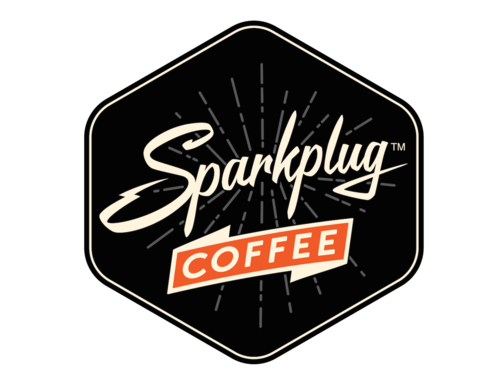What's the scoop on decaf?
Ever wondered about decaf coffee? How is it made? What's the decaffeination process used for Sparkplug Coffee's Unleaded Decaf? How much caffeine is left after the process? Are there any health benefits or concerns?
You're not the only one who'd like to know! So, here is the scoop on decaffeination. I'm not a scientist and this is a pretty simple overview - follow the links to additional resources if you'd like to dig deeper and learn more.
How much caffeine is in decaf coffee?
There are a few different processes for decaffeinating coffee. None of them take 100% of the caffeine out but all remove at least 95% of the caffeine leaving such small amounts that it it is pretty much unnoticeable.
Since decaffeination removes caffeine but otherwise leaves the coffee beans unaffected, there are no health risks or concerns specific to decaf coffee. And for those people who are bothered by caffeine, there is the benefit of having coffee that is almost caffeine-free.
At a very basic level, all of the decaffeination processes soak green (unroasted) coffee beans in some sort of solvent that brings the caffeine (and other compounds) out. Once the caffeine is removed, the beans are washed, dried, and then sent back into the normal roasting process. Key differences among the different decaf processes are to do with what solvent is used and what happens to the other compounds released during the process. Read on to learn about the various decaf processes. Like...
Swiss Water Process Decaffeination
The Swiss Water Process (SWP) takes caffeine out of the bean in a processing plant in British Columbia. This process is certified Organic, and certified Kosher, too! It was first developed in Switzerland in the 1930s, hence the name Swiss Water Process, even though it uses BC water.
Sometimes you'll see Mountain Water Process - this is exactly the same process but done outside Canada. Most of the beans used in our Unleaded Decaf are decaffeinated in Mexico using the Mountain Water Process.
When soaked in water, coffee beans releasecompounds including caffeine. Since many other compounds are released that contribute to the flavour, the water process soaks a batch of coffee beans in a big vat of water that is already supersaturated with all those compounds except for the caffeine. This solution is called GCE - Green Coffee Extract. The GCE is then filtered through an activated charcoal filter that removes only the caffeine molecules. The supersaturated decaffeinated water is then used to soak the beans to reintroduce all the other compounds back to the coffee. Finally, the beans are dried out and then continue on the roasting process, the same as for regular coffee.
This method means that only the caffeine is removed and all of the other compounds that contribute to the coffee's deliciousness are left intact. The Water Process claims to remove 99.9% of the caffeine.
Direct Solvent Decaffeination Method
The traditional method of decaffeination is very similar but uses a natural chemical solvent such as ethyl acetate or methylene chloride instead of water to take the caffeine out. Our Unleaded Decaf is a blend and some of the beans are decaffeinated using this method. The solvents are very effective at removing caffeine and this type of decaffeination takes out about 96% or 97% of the caffeine.
The coffee beans are cleaned of the chemical solvents by water through washing and steaming them. Although we don't like to think of our foods being treated with chemical solvents, we can be assured that any trace amounts left would be burnt off in the roasting process so there is really no chance of any methylene chloride ending up in your cup of joe!
Supercritical Carbon Dioxide Decaffeination Process
I love the name of this process! It refers to extremely pressurized carbon dioxide and not to people who are super-critical about their decaf.
The supercritical carbon dioxide method of decaffeination uses pressurized carbon dioxide as a solvent. Green coffee beans are soaked in pressurized CO2 to extract the caffeine. The caffeine is then removed from the CO2 using activated carbon filters, similar to the Water Process, so that the carbon filters can be cleaned and reused. The supercritical carbon dioxide decaffeination process is very effective at removing caffeine, but also quite capital intensive. This means it is relatively expensive to set up and lesser used than the traditional / direct solvent process.
Decaf Fun Facts
The decaffeination process can change the colour of the beans so the green beans are darker once they are decaffeinated. This presents a challenge to roasters to figure out the right roasting level so as not to under roast them.
Globally, about one in ten cups of coffee consumed is decaf.
A process for decaffeination has been in use since 1905 and the first solvent used was benzene. Ick!
If you’re pregnant, you can have a few more cups of decaf coffee before hitting the recommended 200mg limit since each cup has 2-12 mg of caffeine (everything in moderation, of course!).
More Info
These are the best science-based, fair and accurate websites we could find on the interweb:
From the Swiss Water people, here is an animated video that explains their process in more detail: http://www.swisswater.ca/trade/the-swiss-water-experience/science-of-decaffeination
The site Coffee and Health has basic info on the decaf process and lots of interesting facts about coffee and caffeine in case you want to browse around: http://www.coffeeandhealth.org/all-about-coffee/decaffeination/
This Scientific American article from 1999 is very good, though some of the processes have evolved in the past 15 years so are better at removing caffeine and slightly different than described here: http://www.scientificamerican.com/article/how-is-caffeine-removed-t/
A well-written, well-researched coffee lover's blog: http://www.coffeeconfidential.org/health/decaffeination/
Try our Easy Riders: Low & No Caffeine





